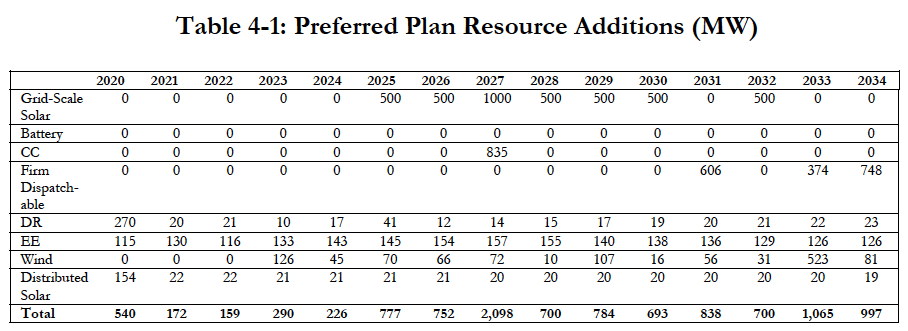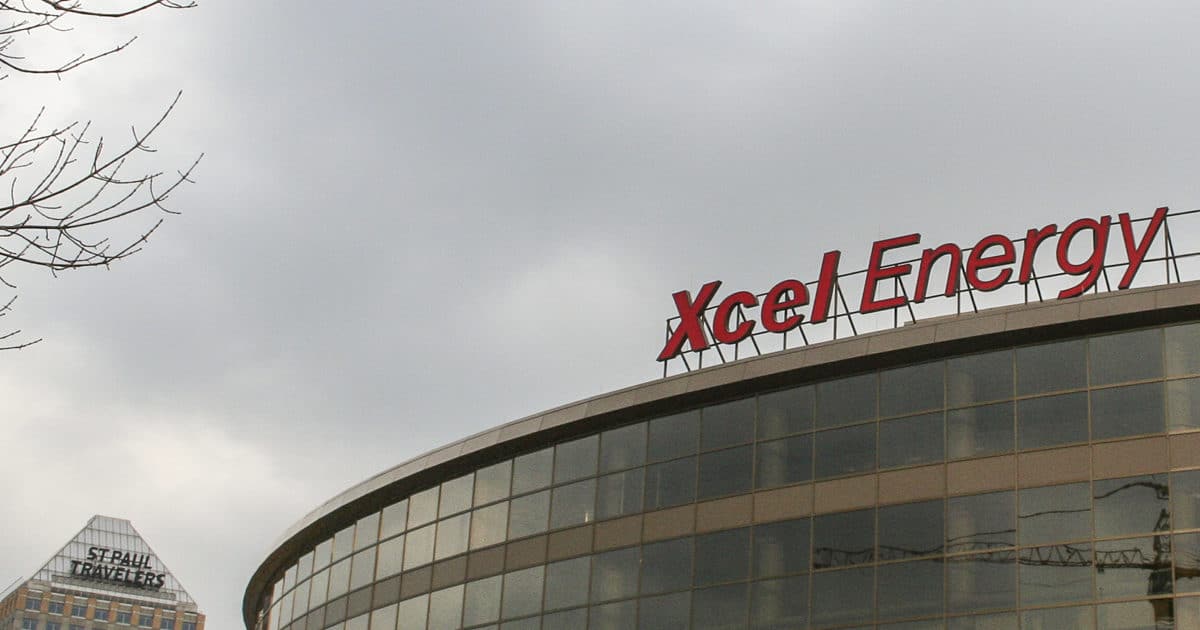Xcel Energy has received a lot of praise for the extremely vague plan that it released last winter to decarbonize its fleet by 2050. However, as with many plans by utilities the devil is in the details, details that were spelled out in Xcel’s long-term plan for Minnesota released earlier this month.
The utility’s “preferred plan” under its Upper Midwest Integrated Resources Plan would wait four years to start building any new wind, and six years to build any large-scale solar. Along the way it plans to shrink the distributed solar market to only 22 MW per year starting in 2021, and slowly strangle it from there on out.

Since community solar is included in its definition of distributed energy, this would mean shrinking or wiping out entirely the state’s leading community solar program.
pv magazine did not find any rationale for this delay in the IRP. However, the utility does claim that it is “currently engaged in the largest build-out of new wind resources” in its history, and estimates a 1.85 GW wind portfolio. Xcel further estimates that by 2024 wind will represent roughly 35% of the electricity supply for the customers in the region, more than any other source.
In the 2025-2032 timeframe Xcel does plan to build around 4 GW of large-scale solar, however this will mean that such projects will only qualify for a 10% Investment Tax Credit (ITC), not the higher rates if they were to start these projects by the end of 2021.
Energy storage in the mix?
By the end of the IRP period in 2034, Xcel is planning for 60% renewable energy on its system. But while the utility talks a lot in the document about the role that energy storage could potentially play, it does not appear to have any concrete plans to deploy batteries beyond the pilot programs that it has in play.
While the utility states that “we are confident utility-scale battery storage will be a part of our long-term resource mix, we are also evaluating the potential for near-term battery storage around our service territories to fulfill distribution system or other needs”, the chart showing its preferred resource mix has a long line of zeros under battery storage stretching to 2034.
And while the utility also states that it will add 1.7 GW of “firm dispatchable, load-supporting resources”, it is not at all clear what technologies it is referring to.
Xcel has much more concrete plans for its existing nuclear reactors. The company plans to run its existing nuclear fleet at least until the end of their licenses. For the Prairie Island nuclear power plant, Xcel is deferring a decision to pursue license extension past its 2034 date at this time, but is proposing a license extension to run its Monticello nuclear power plant through 2040.
Getting to 100%
Xcel has been clear that in order to get past 80% clean energy in a cost-effective manner, it will need technologies that have not been fully developed at this time. This is supported by studies that show that under high wind and solar scenarios it would take a massive amount of lithium-ion batteries to meet demand during cold spells in the Midwest, particularly if nuclear plants are shut down.
Finally, as we have noted, achieving our 100 percent carbon-free electricity by 2050 goal will require further development of technologies that have not yet been identified and commercialized… In addition to potential new battery chemistries mentioned above, potential emerging clean energy technologies include advanced nuclear reactors, carbon capture and storage applications, hybridized gas hydrogen generators, other types of energy storage technologies beyond batteries, and others. As new technologies achieve commercialization, we will remain technology agnostic as we consider including them in our future resource planning analyses.
In other words, like Xcel’s “firm dispatchable, load-supporting resources”, this could be just about anything.
This content is protected by copyright and may not be reused. If you want to cooperate with us and would like to reuse some of our content, please contact: editors@pv-magazine.com.









XCEL has been ‘playing’ many games over the years. As large as they are, they still seem to have a problem as how ‘they’ will fit into the future of the grid. In Colorado a few years back, it was XCEL that was pushing for extra ‘fees’ placed on solar PV adopters, because they (XCEL) felt the solar PV adopters didn’t ‘pay’ their fair share of line and maintenance costs. The people pushed back, XCEL shut up. A few years later, XCEL went out to bid at the end of 2016 for replacement of a couple of old coal fired plants. Amazed that there were 450 bids, some with solar PV and or wind generation with energy storage that actually came in less than the current operations costs of the old coal fired plants.
Perhaps it’s time to promote the next generation of adults within the company to insure, there is a company in the future. If not addressed, XCELs regional incompetence will shut out its participation in the future of the generation and distribution of electricity in this country.
You left out the part where Xcel has fought every Colorado RE mandate….
And, even with their 450 bids they are still waiting until 2023 to implement it.
Correct me if I am mistaken, but Xcel has to file a resource plan and forecasting DG is a part of that planning process regardless of their control over it. So my question is how do you determine they intend to strangle these markets rather than simply forecasting their shrinkage? If I’m not mistaken, solar forecasts by virtually everyone have been wrong since forever (usually underestimated)
Furthermore, why would favoring utility scale be a bad thing, when community solar (2 $/W) and residential solar (3.5 $/W) are currently at least 2 to 3x more expensive than Xcel solar for the Xcel rate payer?
As far as I am aware Xcel doesn’t have control beyond their own incentive programs for DG. They have to take both DG and community solar systems. They can fight community solar legislation or net metering but such an attempt would be very public and draw a lot of scrutiny. They can raise interconnection barriers, but that again would ruffle many feathers. It still isn’t clear to me why this would be bad as implied by the article.
There is also the other side of this issue. Xcel is currently negotiating retirement dates of Sherco and King coal plants, which are (maybe half or more?) of their baseload power. It’s probably what they need to replace with firm, dispatchable power. Don’t fixed coal retirements force their hand? and bind their future to renewable deployment and their nuclear generators?
You raise an interesting point with this issue of forecasting versus intent. However, forecasts have their own power. Xcel is actively planning for a future with lower levels of DG deployment, and this matches its activities in the regulatory arena.
And Xcel has even more venues to influence, if not entirely control, the DG market in its service area than other utilities do. The largest source of DG in what Xcel defines as that category is community solar. By aggressively pushing down the value under VOST every year, Xcel is already successfully wiping out the largest sector for DG on its system, and the pipeline for community solar projects has plummeted. Also, just like all IOUs, if the regulators allow it Xcel can kill rooftoop either using rates or by pushing regulators to dismantle net metering.
These are things that Xcel, like other utilities, is already doing.
I am not arguing that utility-scale is inherently better or worse that DG in this article – I’m merely showing what Xcel is planning (and alluding to what it is actively doing in the regulatory environment). But I will note that in order to have a full conversation about costs, you need to also count benefits. DG solar that generates electricity near demand offers multiple values that utility-scale does not, including fewer T&D losses, the ability to defer T&D investments (see California) and, if paired with storage and managed to do so, resiliency.
Coal retirements bind their future to some other form of generation and/or imports, as they are unlikely to build any more coal. But there is no guarantee that this will be zero-carbon (renewables or nuclear), besides Xcel’s own promises. And by not making concrete plans to deploy battery storage, they are limiting their ability to integrate high levels of renewables. This could be intentional.
@Christian Roselund exactly: “Also, just like all IOUs, if the regulators allow it Xcel can kill rooftoop either using rates or by pushing regulators to dismantle net metering.”
It is this institutionalized unidirectional grid “WE need to own the assets” attitude that is creating the final battle in the death spiral of the typical electric utility. So, these ‘structured’ entities fight for interdependence instead of partnerships with individual distributed energy generation systems. Going to court to fight net metering is becoming the common attack on residential solar PV. Net billing where the utilities seem to want the power to determine what “wholesale” electricity rates are seems to be the goal. Then the “Duck curve” excuse to create TOU rates that spike after solar PV generation starts to roll off during the day, gives the utilities another “high value” revenue stream to kill the wholesale price energy credits produced during the day. So, now folks are looking at solar PV with energy storage behind the meter. The nice thing about this is the ability to program the energy storage ESS for arbitrage. Use stored solar PV from the daylight hours for later in the afternoon when the TOU kicks in. Late at night and early in the morning, charge the ESS again with off peak or super off peak power to use in the early morning hours, when the solar PV system isn’t making peak power.